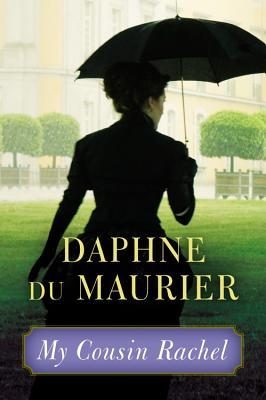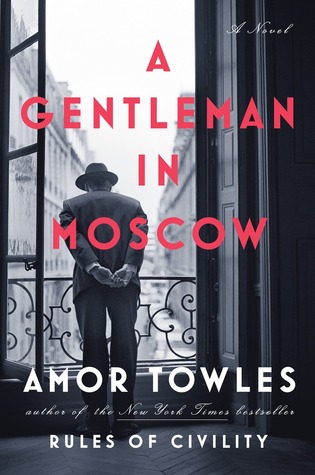Hi guys! It's crunch week for me, all my papers are due soon and I've got a load of grading to do before the semester ends next week. So, as a special favor, I asked my husband to write a post up for me about a topic near and dear to his own heart (and possibly contains useful information for those of you looking for fun gift ideas this year). Anyway, you are in for a treat!
Suzanne is great, but you already know that. She has a busy life between being a full-time student, college instructor, mom and wife. But the one thing she really looks forward to, other than reading, is working on this blog. She loves this blog and speaking with the like-minded folks (you!) who read it. I’ll admit that I am a bit of an absentee reader myself, but I am very glad she has the blog and I love to see the joy that it brings her. She asked me to help out with a guest post, so of course I’m happy to oblige.
Confession time: I am a nerd. I don’t play many video games or role-playing games (shout out to Stranger Things), I don’t read comics and I reached my saturation point in super hero movies before the original Avengers (sorry Evy, I know you love your Captain America). However, I love that nerd culture is becoming more mainstream in the United States and that more folks are comfortable liking things that used to be “uncool” (because seriously, we’re not in junior high anymore and being cool can actually be pretty lame). Let your nerd flag fly high! I do love fantasy and sci-fi novels and movies, I was *that kid* in junior high that had his Magic the Gathering cards taken by the math teacher because I was looking at them during class and at one point in my life I had a map of Middle Earth on my wall (whatever happened to that?). However, nowhere does my nerdom go deeper than it does with board games. I am a major board game nerd. I spent 3 days earlier this month playing board games in a hotel convention hall in Dallas along with 3,000 other fellow board gamers, so clearly this is not just a lukewarm interest for me (some favorites from that trip include Flip Ships, 1960: The Making of the President and Fresco). I love board games. I love how with a few bits of cardboard and plastic and rules you can enter a revised reality, where wooden discs are Puerto Rican farm workers, where dice are casino bosses fighting for supremacy of the Las Vegas strip, or where small plastic boats are pirate ships terrorizing merchants in the Caribbean. I love that moment when the whole table buys into the story the game is telling (the “magic circle”) and players shout for joy as a yellow camel crosses the finish line or the momentary sense of real betrayal when a supposed friend purposely sinks the team’s final and crucial mission.
My love letter could continue, but I’ll stop for now. My point is that I really like games. And, as a gaming convert, I now have a duty to share this joy with others.
So first…
Games are not just for kids. None of the games I referenced above are for kids (though kids could play some of them). These are all designs that were created specifically for an older crowd. A crowd that can handle deeper rules, more engaging play and more impactful decisions. I love it when a game makes me think. And not just in a brain-burning-looking-eight-moves-ahead chess type of thinking. But rather in assessing when it is worth taking a big risk, when I need to change my strategy and what move is optimal. Okay, I admit that any of those things could also apply to a game of chess. Truthfully I’m no good at chess. I respect those who are, but I prefer games with more unique mechanisms and honestly, with more theme. Like having a Mexican standoff with your friends, or trying to tell the truth in such a way as to make the other player think you’re lying but not so overtly that it is obvious this is what you are doing (“clearly I can’t choose the wine in front of you”). These aren’t kid themes. Kids can play them, but my point is that GAMES ARE NOT JUST FOR KIDS (because if they are, then I guess I’ll have to come to terms with being a man-child).
Second…
There are more games than Monopoly, Risk, and Clue (and to be honest, those three games aren’t very good). An important thing happened in 1995. Besides being the year that AOL offered internet access (which, of course, was just a 90s fad) to the masses, Settlers of Catan (now just called Catan) was released. In many ways this was a classic German game: it emphasized individual development with unique mechanisms and had less direct player conflict. Today these types of games are colloquially called “Eurogames.” Through the eighties and early nineties, the Germans (and other Europeans) played their own style of games that had increased non-random strategy (fewer dice rolls) while Americans were playing big thematic games, that essentially involved pushing plastic soldiers around a map and rolling a bunch of dice (now pejoratively called “Ameritrash”). Settlers of Catan had a typical Eurogame engine, but somehow started making waves in the US. What followed was several other Eurogames (now modern classics) including Carcassonne and Puerto Rico. Often the production quality of these games was lower than that of Ameritrash games (more cheap cardboard, less plastic miniatures, lower quality art, etc.), but US gamers loved the depth and structure that these games offered. In the years since the Euro-invasion, Ameritrash games have been made with more interesting mechanisms than just dice-rolling and Eurogames have improved their production quality and used more engaging themes (not just the archetypal 18th century farming). The two styles combined and intertwined to create a new and wonderful hybrid that represents most modern board games today.
Do any of you wish you could have seen Rome during its peak, or Florence during the Renaissance or Versailles during Louis XIV? We missed those golden ages, but we are currently living in the golden age of board gaming. Boardgamegeek.com, a repository of board game information, has a database of over 90,000 games, most of those coming from the past 15 years or so. There are dozens and dozens of incredibly skilled designers and studios who create new games every year. Most modern board games (those that aren’t “mass market” like Hasbro or Parker Brothers) are called “designer games” because they will list the name of the designer on the box cover. Names like Uwe Rosenberg, Eric Lang and Matt Leacock are the da Vincis, Michelangelos and Botticellis of the board gaming renaissance. With thousands of board games coming out every year, there are certainly some duds, but there are also certainly some fantastic games that will speak to you and bring joy to your life and kitchen table. Don’t miss out!
Finally…
Here are some games I recommend and you can consider trying. None of these is too difficult, but all are a lot of fun.
Camel Up: You and up to 7 of your closest friends try to come out on top at the camel tracks. Cheer for the underdog or go with the safe bet, this one is a favorite at our house and we frequently pull it out when playing games with folks who are not in the hobby. A rare game that I think works well with between 2 and 8 players. Game of the year winner in 2014.
Kingdomino: Build a small kingdom, using domino shaped tiles. This one is so simple your grandma can play (and she will probably beat you), but also has a bit of a press-your-luck element as you try to get the perfect tile, but also risking that you’ll be stuck with something you can’t use. Plays very quick at 15 minutes, so you’ll likely find yourself playing it several times in a row. Game of the year winner in 2017.
Patchwork: This is a 2 player game that combines Tetris and quilt-making. Despite the theme, this one is highly satisfying and has a good amount of strategy. A great head-to-head game that doesn’t breed resentment when you are outmaneuvered. It feels so great to get the perfect piece to add to your quilt.
Sushi Go!: A fast-paced card game where you are trying to have the best sushi dinner. This features card drafting, where you get to pick a single card out of your hand to keep, then you have to pass the remaining cards to your neighbor. Simple, but solid. Do you keep the card you really need, or do you take the card that your brother really needs so he can’t have it?
7 Wonders: If card-drafting from Sushi Go! was your thing, 7 Wonders is my favorite implementation of card drafting on a deeper strategic game. Players compete to build up an ancient civilization, deciding whether to pursue military prowess, scientific superiority, cultural achievements or production supremacy.
Pandemic: This is a cooperative game where the players work together to play against the game and prevent the spread of diseases throughout the world. Being members of the CDC may not sound like your idea of a good time, but Pandemic combines tricky decisions, stressful card draws and a globetrotting team of scientists in a memorable and exciting way that will make you want to play again and again. This one often goes down to the wire and is very satisfying when you pull out a close victory and save the world from the rampant plague.
Pandemic Legacy Season One: If you like Pandemic and want to take your game to the next level, get a group of people to commit to Pandemic Legacy. It is based on Pandemic, but adds persistence and reaction to the game. This is a campaign game, where you work your way from January to December fighting off diseases. However, decisions you make in the game will permanently impact the game for future plays. You rip up cards, you write on the board, you open packages with new game pieces (it’s like Christmas!), you get new rules and new objectives. It also adds a narrative arch, where you are imbedded in a story that the game tells and you become invested in not only the outcome of the game, but the twists in the story and the fate of your characters. At the end you cannot replay the game, but if you’re like me, it will be your most memorable board gaming experience. I’ve heard that the creators of the game said something like the following, “We didn’t make a game that you could only play 15 times, we made a game you would actually play 15 times.” As of the time of this writing, Pandemic Legacy Season One is rated the #1 game on Boardgamegeek.com—which is pretty spectacular achievement. (Also, Season Two came out this month and, as long as Santa gets my letter, it is my most anticipated Christmas present this season.)
Thanks for sticking with me. The above games (except for Pandemic Legacy, and maybe 7 Wonders) are pretty light games. If you are more of a jump-in-the-deep-end type of person, maybe check out Power Grid, Scythe or Terraforming Mars or poke around on Boardgamegeek.com and see if something strikes your fancy. Also here are a few other taste curators that I recommend:
Shut Up and Sit Down (their intro to games video here is pretty fun, he makes several of the same points I make above, but with more humor and better costumes)
Happy gaming!
















